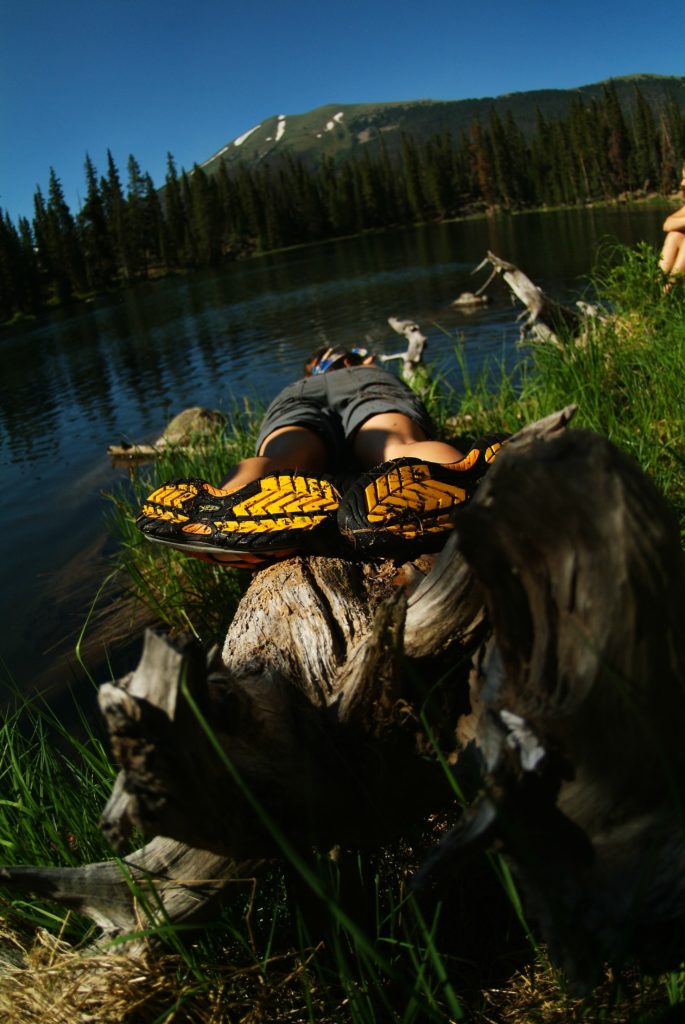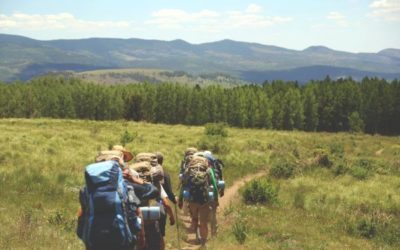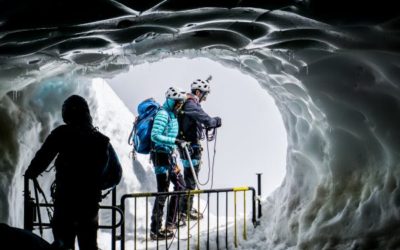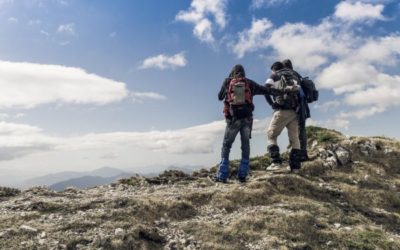Faith-based adventure therapy is a relational style of therapy that takes place in a wilderness setting. Also called, “Wilderness Therapy” or “Adventure-Based Counseling”, the aim of this kind of ministry is largely about identity formation and working through trust issues. In the process of orienting our lives to Jesus Christ, our True North, we find that he is the Great Physician and the Rock of our salvation. In leading others therapeutically on the trail, we may need to help them sever old ties to behaviors or thinking patterns that have greatly damaged their relationship with God or others.
 The wilderness is an ideal setting for giving people space to change wrong ways of thinking or to anchor their whole identity to Jesus. This may require healing old wounds, forgiving others, or having a chance to be heard and understood. We see Jesus modeling this with his own disciples as well as individuals, small groups, and whole crowds who sought him out. Fostering better mental health is a noble and appropriate goal for wilderness ministry.
The wilderness is an ideal setting for giving people space to change wrong ways of thinking or to anchor their whole identity to Jesus. This may require healing old wounds, forgiving others, or having a chance to be heard and understood. We see Jesus modeling this with his own disciples as well as individuals, small groups, and whole crowds who sought him out. Fostering better mental health is a noble and appropriate goal for wilderness ministry.
Last summer two groups of young girls from an Eastern European country went out into the wilderness through an outdoor ministry that uses a model of ministry that is “relational therapy in a wilderness setting”. Coming from such abusive situations, the social worker who had been working with these kids for quite a while was amazed at how much these girls opened up over the course of the week. She said, “I’m a bit baffled at how much the girls opened up in just a week on the trail compared to how guarded they have been for as long as I’ve known them!” The reasons for such a change in these young girls was due to the environment of trust that was built over a number of days journeying together in the wilderness where each person had a chance to tell their life story. Many agree that the wilderness is an excellent environment for counseling young people with behavioral challenges through an experiential process.
Patricia Doucette asks an important question at the outset of her study regarding the value of walking in the outdoors verses sitting in an office while counseling young people. She writes, “Do preadolescent and adolescent youths with behavioral challenges benefit from a multimodal intervention of walking outdoors while engaging in counseling?”[1] Her study reveals that walking outdoors during counseling is definitely beneficial to the process of behavioral transformation among at-risk youth. Author and adolescent researcher, Rebecca Cowan discovered similar results in the lives of several participants she led in the wilderness. One camper described her experience in terms of how it increased her self-esteem: ‘Lord’, wrote one camper in his journal, ‘You know that I am struggling with a bad self-image. Lots of times Satan puts thoughts in my head about not being worth anything. But I know that is wrong. You especially designed and made me-just like you made this beautiful vast wilderness around me.'[2]
RELATED: 7 Reasons Why Church Based Outdoor Ministry is Taking Off
Relational therapy in a wilderness setting can be a highly effective tool to help people gain a whole new perspective on life-which can break a person out of a victim mentality and bring them out into the wide open spaces of God’s grace and healing love. No doubt much can be accomplished by counseling people in an office, but there is a growing consensus that experiential learning and trust-building styles of therapy in the outdoors can be a highly effective form of clinical or pastoral counseling. For more information here is a related article worth reading as well: Wilderness Therapy for Troubled Teens: Why It Works-and When It Doesn’t.
RELATED: 5 Mountains Youthworkers Can Move by Faith To Get Kids to Camp
-by Ashley Denton (some portions are excerpts from Christian Outdoor Leadership: Theology, Theory, and Practice)
[1] Patricia Doucette,.”Walk and Talk: An Intervention for Behaviorally Challenged Youths.” Adolescence 39, no. 154 (Summer 2004)
[2] Rebecca Cowan,. “Stress Camping Experience.” Youth Worker Journal, no. 2 (Summer 1985): 42.




